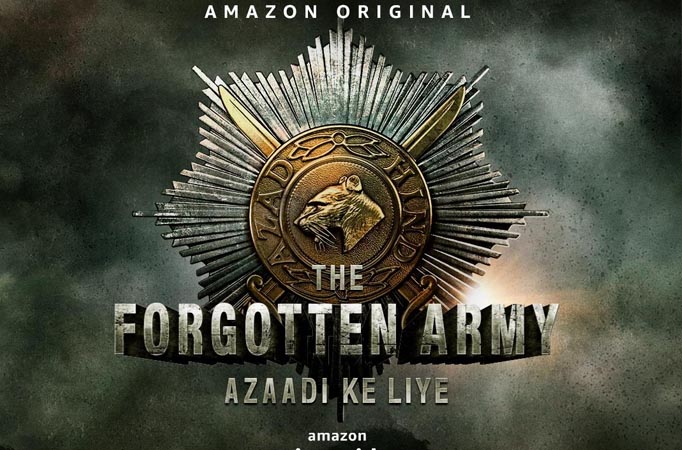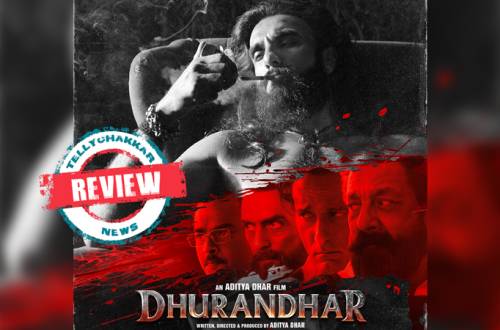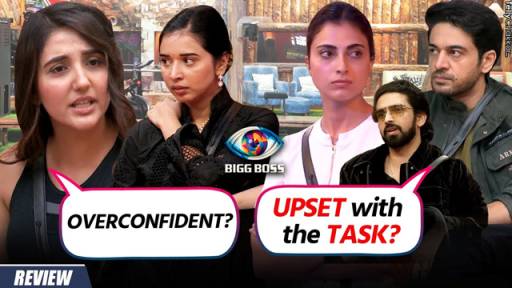
MUMBAI: "The Forgotten Army: Azaadi Ke Liye" (Amazon Prime series); Cast: Sunny Kaushal, Sharvari Wagh, MK Raina, Karanvir Malhotra, TJ Bhanu, Paloma Monappa, Amala Akkineni; Direction: Kabir Khan; Rating: * * & 1/2 (two and a half stars)
By Vinayak Chakravorty
Kabir Khan garnered ample curiosity when he announced "The Forgotten Army: Azaadi Ke Liye", simply because he set out to narrate a saga that perhaps remains the most intriguing in India's military history. Independent India has rarely ever discussed Netaji Subhash Chandra Bose's Indian National Army (INA), or Azad Hind Fauj. So, when one of Bollywood's most high-profile filmmakers sets out to narrate the story, you sit up to take notice.
Khan made a documentary on this subject two decades ago for Doordarshan, so it is fairly safe to assume he went into the effort with necessary knowledge and research. The fact that he chose to narrate the story as a limited series of just five episodes shows he preferred keeping things to the point.
Without maintaining unity of time, place or action in a bid to augment the drama, Khan divides his story into two tracks that move parallel to each other. The first is the account of the INA in the time of World War II, spearheaded by the fictitious officer Colonel Sodhi (Sunny Kaushal). The second track unfolds in 1996, when we see an aged Sodhi (M.K. Raina) getting involved in the students' uprising of Myanmar. The two storylines are connected by the relationship that Sodhi has with the INA soldier Maya (Sharvari Wagh).
The series starts off on a dramatic note but gets into the mode of mush and melodrama by the time it settles down on elaborating Sodhi's blooming love for Maya. Her character, though fictitious, is meant to be important because she becomes the face of the INA women's regiment in the storyline. Netaji's Azad Hind Fauj was one of the earliest armies anywhere in the world to include a combat regiment exclusively comprising women.
Khan's objective to draw up parallel narratives obviously also tries to highlight the fact that from the time of World War II till the modern era of students' protests, nothing has changed. Absolutist regimes and exploitation of the many by a few continue to be met by demands for freedom and the right to a dignified existence, in turn triggering off revolution and war. So, what holds true in the INA's battle for freedom against the British during Sodhi's youth also applies during the Myanmar sojourn of his oldage.
Kabir Khan reveals an amount of creativity in setting up Myanmar as backdrop of the saga -- the wilds of Myanmar almost become a character in the narrative, a mute witness to the history of atrocities and travails that the film sets out to talk about. This was where the INA fought for survival and India's freedom on its way back home from Singapore. Almost five decades later, this was also where fictional love story of Sodhi and Maya finds a calming culmination.
The problem is the writing (Kabir Khan, Shubhra Swarup, Heeraz Marfatia) fails to balance the two tracks of the story. It doesn't take long for filmi melodrama to take over, as the fictional track of Maya and Sodhi takes precedence over the real account of the INA.
Any attempt at engrossing the audience with a slice of history is marred by efforts to induce drama into the script. In the 1996 track, grandpa Sodhi shoots Myanmarese soldiers and escapes on a train with his bunch of accompanying youngsters. The stretched sequence, obviously forced into the narrative at the end of one of the middle episodes to kickstart the climactic drama, dilutes the basic intention of the story owing to its sheer Bollywoodish treatment.
The arduous journey of the army in the penultimate episode, through the Myanmar jungles towards India, leaves a few brutal sights and an ominous expectation of something intense coming up in the climax. But nothing of that sort happens.
As the story finally starts to taper down to a finale that is all about the Maya-Sodhi track, you begin to realise this is essentially all about love in the time of war. Bose's army and its battle are indeed forgotten.
Khan's lack of willingness to get into absorbing factual details is also reflected in the very little focus allotted to Netaji Subhash Bose, his strategies or maxims.
A lot of the pertinent points that the series makes is through Shah Rukh Khan's voiceover, when he narrates chunks of background information from time to time. We get to know, for instance, how, even as the INA battled hardship and annihilation in the Myanmar wilds, the British were so scared of the army's advancing towards India that they banned all news about it in the newspapers and on radio.
We learn how months later, when the survivors would manage to enter India, they would be reduced to being refugees in their own country. They would be labelled an army of traitors before the truth emerged, sparking off violent protests all over India. The British Indian Navy rebelled, and rechristened itself Indian National Navy.
The point is, there was an explosive saga here, waiting to be explored, which this series somehow does not manage to do. Khan and his co-writers seem satisfied using the INA and its brutal travails as a mere prop to create skin-deep emotions. They avoid delving deeper to show the socio-politics that might have led the army to their plight.
Instead, ample runtime is spent in showing a mystical blue bird that leads Maya to the safe haven of a cave with a Buddha statue, when she is cut off from the army. Years later, the same bird guides Sodhi in the same jungle. War and its violence do not make for a pleasant watch, and Kabir Khan judiciously keeps such depictions to a minimum. However, he could have been more aggressive while bringing alive the latent drama in the piece of history he chooses to narrate.
The show boasts of top-notch tech-specs, with cinematography (Aseem Mishra) and editing (Peter Alderliesten and Rameshwar S. Bhagat) harmonising the melodrama and brutal battle scenes with the serenity of the wild terrain where most of the action takes place. Seasoned actors as MK Raina and Amala Akkineni (as Maya's mother) come up with credible performances, just as a greenhorn young cast led by Sunny Kaushal and Sharvari Wagh.
The series ends solemnly noting how nearly 26,000 out of INA's 50,000 soldiers laid down their lives for India's freedom. Survivors who made it back to the country were neither re-inducted into the army of free India, nor were they given freedom fighter's pension.
Yet, as Raina's aged Sodhi tell a bunch of youngsters, the battle to uphold freedom is tougher than the battle to attain it, and the former-mentioned is the battle today's generation has to constantly wage.
If anything the notion holds true more than ever in present times. The sobering observation leaves you appreciating Kabir Khan's effort a little more than you did all through its runtime of five episodes.

















Add new comment